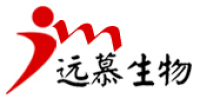Periplasmic Chaperones Used to Enhance Functional Secretion of Proteins in E. coli
互联网
互联网
相关产品推荐

Recombinant-Drosophila-melanogaster-CAAX-prenyl-protease-2SrasCAAX prenyl protease 2 EC= 3.4.22.- Alternative name(s): Farnesylated proteins-converting enzyme 2; FACE-2 Prenyl protein-specific endoprotease 2 Protein severas
¥11466

Shiga toxin II subunit B 兔多抗 | Enterohemorrhagic E. coli (EHEC) stx2B Antibody, Rabbit PAb, Antigen Affinity Purified
¥800

Recombinant-Ralstonia-solanacearum-Hypersensitivity-response-secretion-protein-hrcVhrcVHypersensitivity response secretion protein hrcV
¥14910

AEBP1 (Adipocyte enhance binding protein 1) 脂肪细胞增强结合蛋白1
询价

磷酸氢锆(IV)水合物;13772-29-7(anhydrous basis);≥99%, average particle size 1.5um, used for ion exchange;V65200-50g
¥199
相关问答

